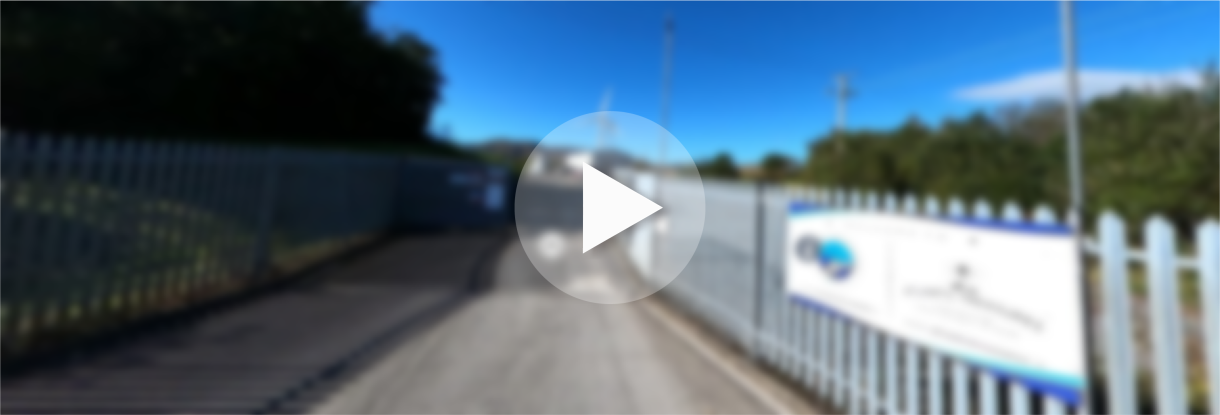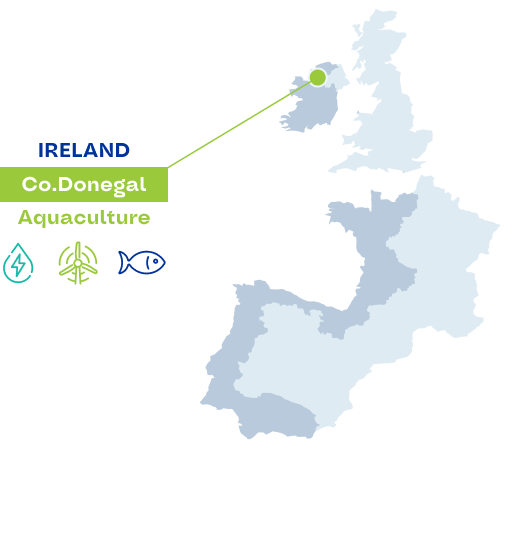Follow us!
Follow us!
Located in the North-West of Ireland, in County Donegal, the HY4RES aquaculture pilot site will implement a hybrid renewable energy system combining wind and hydro power. This hybrid system combined with an intelligent management software will enable to maximise the production and use of renewable energy in a fish processing plant.
Aquaculture pilot site

Wind and hydropower installations are already present in the area, supplying energy to seafood processing plants. Activities at this pilot site will focus on hybridising existing renewable energy production systems and increasing the export capacity of output energy.
The Irish aquaculture site is based on the development of hydropower technologies that respect biodiversity (in particular turbines harmless to fish), development of software to design hybrid renewable energy systems, adapted to small hydropower installation scale.

2007
Date of the commissioning of the hydropower plant installed at Island Seafoods, where the pilot site will be implemented
2 businesses
2 businesses hosted on the same site: Island Seafoods and Albatross Seafoods
200-240 kW
Current production of the hydropower plant
61 meters
It is the pump’s head height. The specifications of the hydropower installation are: speed of up 1000 rpm and flow rate of 0.7 m³/s
850 kW
Power rating of the wind turbine, installed in 2022
80 kW
Average energy consumption by Island Seafoods of the energy produced from the turbine on site
10 years
10 years of energy data (generation and consumption) already collected by Island Seafoods
The current challenge is the wind turbine is operating at 50% capacity, due to limits of the local electricity grid for export. Thus, the wind turbine is currently operating between 300-400 kW below its maximum potential for electricity generation.
The solution is to transform this ‘excess’ energy, specifically use it to dry locally cut forests and produce biomass that meet specific percentage of dry content requirements for sale locally.
The biomass will also serve to support the site when the wind turbine is not operating.
The site presents technical and technological challenges, as optimisation is required within this dynamic system to maximise economic and environmental outcomes. Dynamic control and the optimisation of biomass production on site is important and challenging.
In terms of transferability, other fish factories could implement biomass systems, and this site could provide their fuel supply, and act as a facility where hybrid has been optimised.

The development of fish-friendly hydropower can be done by using fish-friendly turbine technology. This is because the turbine is one of several technologies that affects the fish viability in the hydropower location.
The selection of the turbine type must consider several factors, such as economics and conditions in the field such as head and flow rate. Based on these parameters, the type of turbine that can be used is Pump-as-Turbine (PAT), which can operate at low head and flow rate and has a friendly economic value. The type of PAT that can be developed in fish-friendly hydropower is the Screw Centrifugal PAT. In screw centrifugal PAT, the impeller of the centrifugal pump is modified into a spiral blade shape.
The screw centrifugal PAT working principle, a stream of water flowing from a certain height and with a certain flowrate will enter through the screw inlet and flow along the screw to the outlet. The flow will generate a spiral force that will drive the generator and generate electricity.
Along with the water flow, the fish can also flow through the screw groove so that it can avoid being injured by turbine blades strike. However, screw centrifugal pumps have never been used as turbines. So far, it has only been used as a pump and has been used for conveying live fish. Therefore, this type of pump is fish-friendly. Thus, research which consists of experimental and computational fluid dynamic (CFD) analysis will be held in this project. The research general aims are to find the performance and characteristics of screw centrifugal PAT so that this technology can be applied.
The advantages expected with the application of screw centrifugal PAT are:
![]()

Irish Fish Producers Organisation (IFPO)
Fish processing facilities, other food producers, policy makers in the seafood, energy and environment sectors, researchers in marine and RE systems
Sign up to our newsletter!